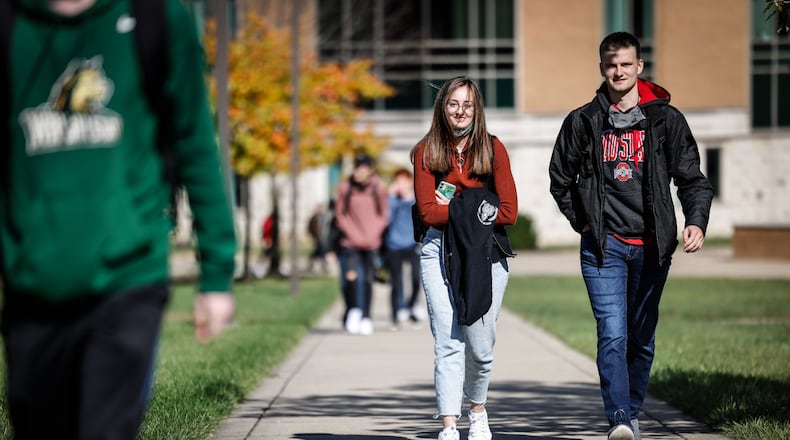The university is facing an enrollment crisis: Wright State has seen about a 30% decline in enrollment overall in the last five years. First-year undergraduate student enrollment has declined by 53% since 2015, according to university data.
The trustees also authorized the university to make a tuition increase in line with inflation, plus an additional 2% increase if university administrators choose to increase tuition. Any final changes to tuition rates for next fall would be announced at the June Board of Trustees meeting. Qualifying existing students would continue to pay their previous rates, under the university’s “Wright Guarantee” program.
Fecher said the planned $7 million in reserve fund use is down from $11 million that the university initially projected to use. Fecher said the finance committee continues to discuss the university’s structural deficit “despite the financial strength that we’ve been able to build over the past year.”
He noted much of the financial strength the university has gained is due in part to one-time deals, such as federal aid.
Edwards said the university is launching ways to increase enrollment now, including focusing efforts on Latino students within the Dayton City School District and disabled students.
Edwards said the university is also working to retain students — which will also help enrollment numbers — via targeted advertising and repeated reminders from the university to re-enroll for the spring 2022 semester.
She said the university is working proactively with students who may have “roadblocks” to re-enroll, like a hold on their account from owing the university money or not having money to enroll next semester.
“We all know that one roadblock to a student could lead them to drop out of school,” Edwards said.
Edwards said the university also will work with the Ohio Department of Higher Education on a “College Comeback” program, which is aimed at Ohio students who may have dropped out of another university who may be able to reenroll at other schools. The program is geared towards students who have debt, but no degree, she noted.
“It really is trying to get those students to completion, whether it’s to an associate’s, or to a four-year degree,” Edwards said.
Edwards and student trustee Dhishant Asarpota both discussed the importance of getting students involved on campus to get them engaged and continuing their education.
“While we are far from normal, the students are very happy to be back on campus again and engaged,” Edwards said. “And we know an engaged student is a successful student.”
Asarpota said while student engagement is picking up this semester, with more students attending events, he would like to see more students coming out.
He suggested students may be struggling to come to activities because they are no longer taking place virtually.
“Now, we have to go home, spend a few hours at home and come back for campus activities in the evening,” Asarpota said. “That might be a new challenge that we may not have seen before COVID.”
About the Author

